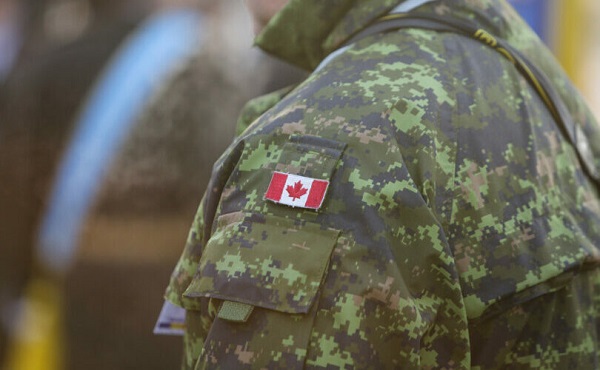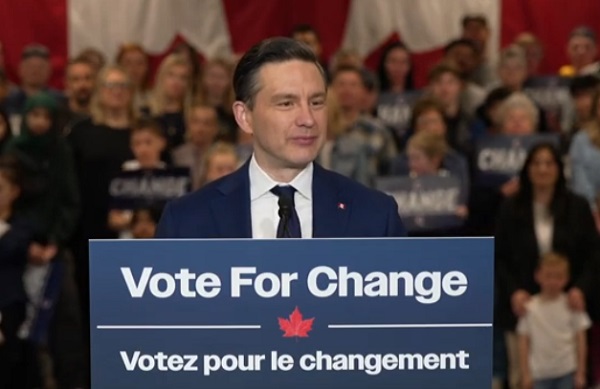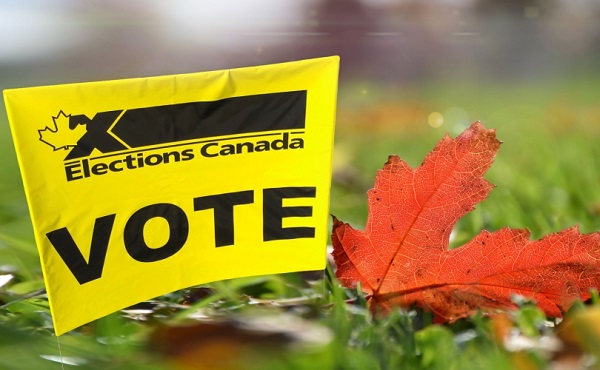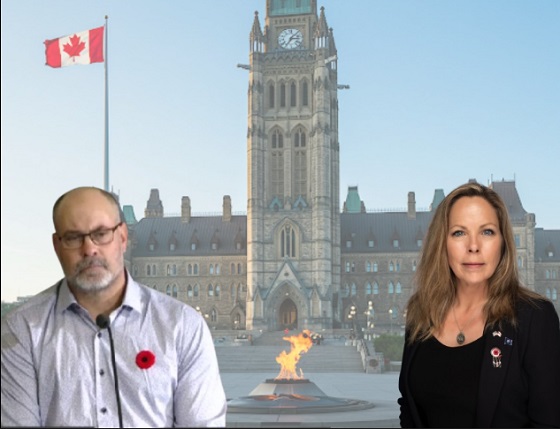Alberta
Big boost for energy companies working on emission reduction innovations

From the Province of Alberta
In October 2019, Emissions Reduction Alberta (ERA) launched the Natural Gas Challenge and invited technology developers to share project concepts for innovation opportunities in Alberta’s natural gas industry.
Alberta’s government is providing $58 million through ERA to support this opportunity to create jobs in the natural gas sector.
Funding recipients include a project that uses artificial intelligence to locate and measure methane emissions, and a project to produce renewable natural gas from biogas at an agricultural facility that will be the first of its kind in Alberta.
The 20 new projects have the potential to reduce a cumulative one million tonnes of emissions by 2030 – the same as taking about 750,000 cars off Alberta’s roads. These projects will also get Albertans back to work by creating more than 750 new jobs when they are needed most.
“Alberta is already a leader when it comes to our environmental footprint, and our ongoing work with Emissions Reduction Alberta will help us become even better.”
Projects were selected through ERA’s competitive review process. Experts in science, engineering, business development, commercialization, financing, and greenhouse gas quantification reviewed 117 submissions and chose projects based on the strongest potential for success.
“With Alberta’s 300-year supply of affordable natural gas, a technically skilled workforce and world-class environmentally responsible facilities, there is tremendous opportunity for Alberta to compete with international markets. Funding opportunities like this, in partnership with Emissions Reduction Alberta, are critical to attracting investments that will grow Alberta’s economy by reducing upfront costs, while reducing our province’s share of global emissions.”
Government funds ERA through the Technology Innovation and Emissions Reduction (TIER) system. TIER is an improved system to help energy-intensive facilities find innovative ways to reduce emissions and invest in clean technology to stay competitive and save money. Facilities can pay into a TIER Fund, which is used for innovative and cleaner Alberta-based projects like those selected under the Natural Gas Challenge.
ERA’s funding model requires that every dollar committed to an initiative is matched or exceeded by additional investments, which ensures there is a market demand for the technology. Government’s $58-million investment through ERA has been more than doubled by private and public investment to stimulate the economy, lower emissions and create jobs, leading to a total of $155 million in funding.
“Investing in the next wave of technological advancements will help Canada’s natural gas industry achieve new efficiencies, reduce costs, and continue to drive world-leading environmental performance.”
A complete list of the successful Natural Gas Challenge projects can be found here.
“We are grateful for ERA’s support to help fund Canadian Natural’s ALT-FEMP project. By working together, we will develop and pilot technologies that can be adopted across the industry to enable early detection of methane emissions through cost-effective methods, ultimately accelerating industry’s reductions in greenhouse gas emissions.”
“This project is an important first step for Alberta, which has all the ingredients to be a leader in the hydrogen economy – including the ability to produce a near zero-emission hydrogen at a lower cost than most jurisdictions in the world.”
Quick facts
- In 2018, Alberta produced almost 70 per cent of the marketable natural gas in Canada.
- ERA works with government, industry and innovators to support technologies that reduce greenhouse gas emissions.
- Since 2009, ERA has committed $607 million in funds from industrial carbon pricing toward 183 projects worth $4.1 billion that are reducing emissions, keeping industries competitive, and leading to new investment opportunities.
- These 183 projects are estimated to deliver cumulative reductions of 34.8 million tonnes of emissions by 2030.
If successful, these technology innovations will lead to cumulative GHG reductions of almost one million tonnes of CO2e by 2030—equivalent to the GHG emissions from 750,000 passenger vehicles driven for one year. It is anticipated these projects will also deliver approximately 760 new jobs.
Funding is being sourced from the carbon price paid by Large Final Emitters in Alberta through the Technology Innovation and Emissions Reduction (TIER) fund.
The following projects were selected for funding:
UPSTREAM PROJECTS:
MultiSensor Canada Inc.
Methane Imaging Solution for Continuous Leak Detection and Quantification for Tank Emissions and Facility Monitoring
Total project value: $3,200,000 | ERA commitment: $1,600,000
Permanent installation and demonstration of an infrared camera at 100 well sites to provide continuous leak detection and quantification for tank emissions and facility monitoring.
Qube Technologies
Emissions Reductions Through Artificial Intelligence
Total project value: $16,200,000 | ERA commitment: $4,000,000
Deployment of an industrial device designed to collect large quantities of data to use artificial intelligence and machine learning techniques to better quantify, locate, and classify emissions.
University of Calgary:
Field-Scale Deployment and Acceleration of Made-In-Alberta Technology for Fugitive Emissions Detection and Reduction
Total project value: $3,200,000 | ERA commitment: $1,600,000
Full-scale, field pilot of a new vehicle-based technology designed for equipment-level emissions screening to support effective regulatory leak detection and repair.
Canadian Natural Resources Limited
Fugitive Emissions Study Using Aerial Detection Technology
Total project value: $1,900,000 | ERA commitment: $930,000
Pilot project of both aerial screening technology and ground-based detection at conventional oil and gas facilities to validate technology performance and inform a broader Alternative Fugitive Emissions Management Program (FEMP).
Challenger Technical Services
Multi Component Downhole Injection System
Total project value: $2,600,000 | ERA commitment: $1,000,000
Development, testing, and validation of a multicomponent downhole injection system that uses epoxy resins to rapidly seal leaking oil and gas wells and eliminate surface casing vent flow.
Petroleum Technology Alliance Canada (PTAC)
Affordable Zero-Emission Fail-Safe Electric Dump Valve Actuator (EDVA) Phase 2
Total project value: $2,200,000| ERA commitment: $550,000
Applied research, prototype design and development, and field pilot testing of an electrically-driven valve actuator that is more compact, powerful, and lower maintenance than alternative pneumatic options.
Kinitics Automation Limited
Valve Actuator for Gas Producers
Total project value: $1,100,000 | ERA commitment: $550,000
Testing a novel electric actuator at 15 well sites in Alberta to validate the technology as a cost effective, technically viable alternative to eliminate venting from established pneumatic devices.
Westgen Technologies Inc
Unlocking EPOD Economic Zero Bleed Pneumatic Instrument Air Retrofit Solution
Total project value: $4,000,000 | ERA commitment: $1,300,000
Demonstration of a solar-hybrid power generation system for remote well sites to provide reliable electricity to prevent gas venting from pneumatic devices in a cost-effective manner.
Modern Wellbore Solutions
Demonstration of a Full-Scale Multilateral Junction Assembly
Total project value: $12,100,000 | ERA commitment: $3,500,000
Full-scale deployment of a multilateral junction tool assembly that will allow natural gas operators to drill, complete, and operate multi-branched wells for unconventional reservoirs. The technology reduces emissions by enabling lateral junctions rather than requiring separate wells.
Tourmaline Oil Corp.
Natural Gas Mobile Unit for Drilling Rig Power Generation
Total project value: $8,000,000 | ERA commitment: $3,200,000
Pilot demonstration of a plug and play, mobile power generation system for drilling rigs that uses smart energy to automatically start and stop generators to match the power demand of the rig.
DOWNSTREAM AND VALUE-ADDED PROJECTS:
ATCO Gas and Pipelines Ltd.
Fort Saskatchewan Hydrogen Blending
Total project value: $5,700,000 | ERA commitment: $2,800,000
Pilot project to test hydrogen blending in ATCO’s Fort Saskatchewan natural gas distribution system. The project will source and test equipment and determine applicability of existing codes, standards, and legislation.
Ekona Power Inc.
Development and Field Testing of a Tri-Generation Pyrolysis (TGP) System for Low-cost, Clean Hydrogen Production
Total project value: $13,800,000 | ERA commitment: $5,000,000
Prototyping a new approach to converting natural gas to hydrogen and a solid carbon by-product representing a new pathway to produce zero-emissions hydrogen, electricity, and other products by decarbonizing natural gas.
Standing Wave Reformers Inc.
A New Wave in Hydrogen Production
Total project value: $8,200,000 | ERA commitment: $3,000,000
Design optimization, system integration, pilot demonstration, techno-economic analysis, and advancement of commercial deployment plans for a technology system to decarbonize natural gas.
ATCO Gas and Pipelines Ltd.
ATCO and Future Fuel RNG
Total project value: $15,900,000 | ERA commitment: $7,900,000
First-of-its-kind commercial demonstration to produce renewable natural gas (RNG) to be sold and used within the province in Compressed Natural Gas (CNG) fleet vehicles and commercial applications.
Sustainitech Inc.
Co-Locating Natural Gas and Indoor Agriculture for Alberta’s Future
Total project value: $17,900,000 | ERA commitment: $5,000,000
Design, construction, and operation for a first-of-kind commercial deployment of a modular farming system that combines automation, hydroponics, adsorption cooling, and advanced lighting to grow crops.
Enersion Inc.
Greenest Natural Gas-Powered Quad-generation with a 41% GHG Reduction
Total project value: $3,800,000 | ERA commitment: $1,800,000
Technology that uses natural gas to generate electricity, cooling, and heating in an integrated package for multiple applications, including industrial, agricultural, commercial, and residential sectors
Stone Mountain Technologies, Inc.
Demonstration of Thermally Driven Heat Pumps for Residential Heating Applications
Total project value: $2,000,000 | ERA commitment: $990,000
Design and prototyping of technology that uses natural gas to drive a heat pump cycle. Unlike electrically-driven heat pumps, the technology is ideal for cold climates.
Anax Power
Turboexpander Project
Total project value: $6,200,000 | ERA commitment: $2,400,000
Installation and operation of technology that provides clean, distributed electricity from the pressure and flow of natural gas without combustion.
Innovative Fuel Systems
Advanced Dual-Fuel System Commercial Demonstration
Total project value: $2,800,000 | ERA commitment: $1,200,000
Commercial validation of technology that allows heavy duty truck engines to displace up to 50 per cent of their diesel with cleaner burning natural gas.
Converting Landfill Gas to Renewable Natural Gas
Total project value: $25,000,000 | ERA commitment: $10,000,000
The project will explore opportunities to upgrade landfill gas (LFG) at Clover Bar Landfill and inject it into Alberta’s natural gas system as renewable natural gas (RNG). Stakeholders in the Clover Bar Landfill, the City of Edmonton and Capital Power, are exploring these possible opportunities.
All recipients are required to produce a final outcomes report that will be shared publicly for the broader benefit of Alberta. All projects involve field piloting, demonstration, or commercial deployment of technology within the province.
Click the links below for more details on ERA’s Natural Gas Challenge:
- Full Project Proposal Guidelines
- Call for Expressions of Interest Guidelines
- Eligible Expense and Cost Instructions
- Privacy, Confidentiality, Data, and Security Policy
- Frequently Asked Questions
- Watch the Informational Webinar
- Learn more about ERA’s funding process.
WHY TARGET THE NATURAL GAS VALUE CHAIN?
Natural gas is a critical resource, providing heat and power for Alberta’s residential, commercial, and industrial sectors. It is the least GHG emitting of traditional fossil fuels, and a global shift toward natural gas from coal- and oil‑based resources is underway.
Canada is the fourth largest natural gas producer in the world, with net exports totaling $6.1 billion in 2018. Alberta produces almost 70 per cent of the marketable natural gas in the country. In 2017, the province emitted 35 million tonnes of CO2e from natural gas production and processing. A significant opportunity exists to improve cost competitiveness along Alberta’s natural gas value chain and reduce GHG emissions.
The Government of Alberta is committed to revitalizing Alberta’s natural gas sector. The province is developing and implementing a robust strategy with key recommendations from the 2018 Roadmap to Recovery Report, a document advising the government on reviving Alberta’s natural gas industry.
Alberta
Low oil prices could have big consequences for Alberta’s finances

From the Fraser Institute
By Tegan Hill
Amid the tariff war, the price of West Texas Intermediate oil—a common benchmark—recently dropped below US$60 per barrel. Given every $1 drop in oil prices is an estimated $750 million hit to provincial revenues, if oil prices remain low for long, there could be big implications for Alberta’s budget.
The Smith government already projects a $5.2 billion budget deficit in 2025/26 with continued deficits over the following two years. This year’s deficit is based on oil prices averaging US$68.00 per barrel. While the budget does include a $4 billion “contingency” for unforeseen events, given the economic and fiscal impact of Trump’s tariffs, it could quickly be eaten up.
Budget deficits come with costs for Albertans, who will already pay a projected $600 each in provincial government debt interest in 2025/26. That’s money that could have gone towards health care and education, or even tax relief.
Unfortunately, this is all part of the resource revenue rollercoaster that’s are all too familiar to Albertans.
Resource revenue (including oil and gas royalties) is inherently volatile. In the last 10 years alone, it has been as high as $25.2 billion in 2022/23 and as low as $2.8 billion in 2015/16. The provincial government typically enjoys budget surpluses—and increases government spending—when oil prices and resource revenue is relatively high, but is thrown into deficits when resource revenues inevitably fall.
Fortunately, the Smith government can mitigate this volatility.
The key is limiting the level of resource revenue included in the budget to a set stable amount. Any resource revenue above that stable amount is automatically saved in a rainy-day fund to be withdrawn to maintain that stable amount in the budget during years of relatively low resource revenue. The logic is simple: save during the good times so you can weather the storm during bad times.
Indeed, if the Smith government had created a rainy-day account in 2023, for example, it could have already built up a sizeable fund to help stabilize the budget when resource revenue declines. While the Smith government has deposited some money in the Heritage Fund in recent years, it has not created a dedicated rainy-day account or introduced a similar mechanism to help stabilize provincial finances.
Limiting the amount of resource revenue in the budget, particularly during times of relatively high resource revenue, also tempers demand for higher spending, which is only fiscally sustainable with permanently high resource revenues. In other words, if the government creates a rainy-day account, spending would become more closely align with stable ongoing levels of revenue.
And it’s not too late. To end the boom-bust cycle and finally help stabilize provincial finances, the Smith government should create a rainy-day account.
Alberta
Governments in Alberta should spur homebuilding amid population explosion

From the Fraser Institute
By Tegan Hill and Austin Thompson
In 2024, construction started on 47,827 housing units—the most since 48,336 units in 2007 when population growth was less than half of what it was in 2024.
Alberta has long been viewed as an oasis in Canada’s overheated housing market—a refuge for Canadians priced out of high-cost centres such as Vancouver and Toronto. But the oasis is starting to dry up. House prices and rents in the province have spiked by about one-third since the start of the pandemic. According to a recent Maru poll, more than 70 per cent of Calgarians and Edmontonians doubt they will ever be able to afford a home in their city. Which raises the question: how much longer can this go on?
Alberta’s housing affordability problem reflects a simple reality—not enough homes have been built to accommodate the province’s growing population. The result? More Albertans competing for the same homes and rental units, pushing prices higher.
Population growth has always been volatile in Alberta, but the recent surge, fuelled by record levels of immigration, is unprecedented. Alberta has set new population growth records every year since 2022, culminating in the largest-ever increase of 186,704 new residents in 2024—nearly 70 per cent more than the largest pre-pandemic increase in 2013.
Homebuilding has increased, but not enough to keep pace with the rise in population. In 2024, construction started on 47,827 housing units—the most since 48,336 units in 2007 when population growth was less than half of what it was in 2024.
Moreover, from 1972 to 2019, Alberta added 2.1 new residents (on average) for every housing unit started compared to 3.9 new residents for every housing unit started in 2024. Put differently, today nearly twice as many new residents are potentially competing for each new home compared to historical norms.
While Alberta attracts more Canadians from other provinces than any other province, federal immigration and residency policies drive Alberta’s population growth. So while the provincial government has little control over its population growth, provincial and municipal governments can affect the pace of homebuilding.
For example, recent provincial amendments to the city charters in Calgary and Edmonton have helped standardize building codes, which should minimize cost and complexity for builders who operate across different jurisdictions. Municipal zoning reforms in Calgary, Edmonton and Red Deer have made it easier to build higher-density housing, and Lethbridge and Medicine Hat may soon follow suit. These changes should make it easier and faster to build homes, helping Alberta maintain some of the least restrictive building rules and quickest approval timelines in Canada.
There is, however, room for improvement. Policymakers at both the provincial and municipal level should streamline rules for building, reduce regulatory uncertainty and development costs, and shorten timelines for permit approvals. Calgary, for instance, imposes fees on developers to fund a wide array of public infrastructure—including roads, sewers, libraries, even buses—while Edmonton currently only imposes fees to fund the construction of new firehalls.
It’s difficult to say how long Alberta’s housing affordability woes will endure, but the situation is unlikely to improve unless homebuilding increases, spurred by government policies that facilitate more development.
-

 armed forces1 day ago
armed forces1 day agoYet another struggling soldier says Veteran Affairs Canada offered him euthanasia
-

 2025 Federal Election2 days ago
2025 Federal Election2 days agoAs PM Poilievre would cancel summer holidays for MP’s so Ottawa can finally get back to work
-

 Opinion14 hours ago
Opinion14 hours agoCanadians Must Turn Out in Historic Numbers—Following Taiwan’s Example to Defeat PRC Election Interference
-

 International22 hours ago
International22 hours agoHistory in the making? Trump, Zelensky hold meeting about Ukraine war in Vatican ahead of Francis’ funeral
-

 C2C Journal18 hours ago
C2C Journal18 hours ago“Freedom of Expression Should Win Every Time”: In Conversation with Freedom Convoy Trial Lawyer Lawrence Greenspon
-

 Business22 hours ago
Business22 hours agoIt Took Trump To Get Canada Serious About Free Trade With Itself
-

 conflict1 day ago
conflict1 day agoWhy are the globalists so opposed to Trump’s efforts to make peace in Ukraine?
-

 2025 Federal Election1 day ago
2025 Federal Election1 day agoCarney’s budget is worse than Trudeau’s





